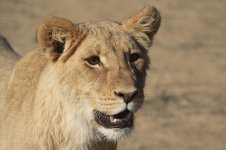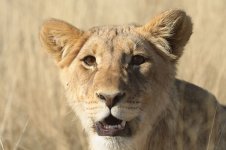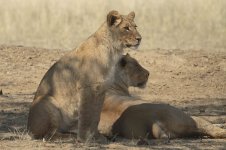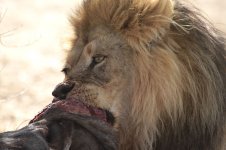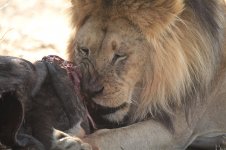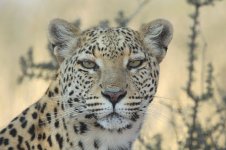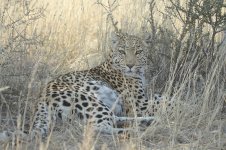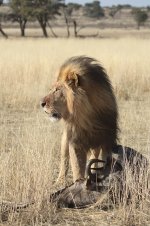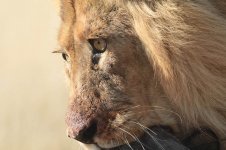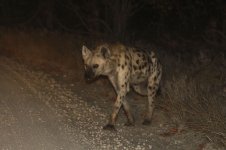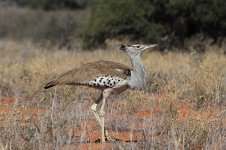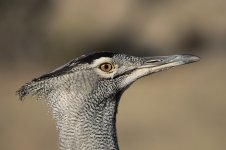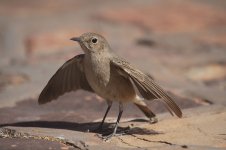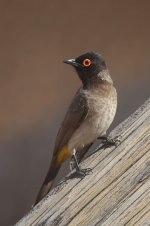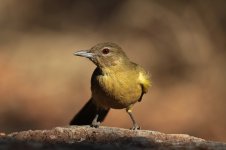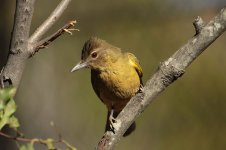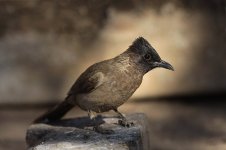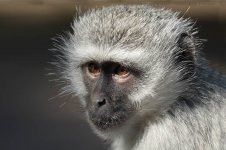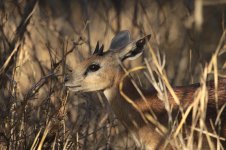
-
Welcome to BirdForum, the internet's largest birding community with thousands of members from all over the world. The forums are dedicated to wild birds, birding, binoculars and equipment and all that goes with it.
Please register for an account to take part in the discussions in the forum, post your pictures in the gallery and more.
You are using an out of date browser. It may not display this or other websites correctly.
You should upgrade or use an alternative browser.
You should upgrade or use an alternative browser.
South Africa revisited, Felines and Critters of the Night (1 Viewer)
- Thread starter Jos Stratford
- Start date
More options
Who Replied?
birdboybowley
Well-known member.....apparently so ;)

B*****d.... 
Bananafishbones
Incoherently Rambling .....

This is unbelievable stuff Jos - the whole report is mouth watering, I cant wait for more, but most importantly I cant wait for my trip in a little over 9 months time
*** the image of the White Faced Scops Owl is stunning ***
*** the image of the White Faced Scops Owl is stunning ***
Last edited:

Farnboro John
Well-known member
Jos, what a staggering trip. I'm reading it with tissues to catch the drooling at the mouth. Great pictures too. I gotta go there!
John
John

Jos, what a staggering trip.
I was rather impressed with the cat tally too ...I remember one previous visit to Kgalagadi where I saw neither Leopard nor Cheetah, and I read one birder's report where they saw no cats of any description in four days (that did kind of stagger me too however).

21 July. Kgalagadi, Nossob Valley.
Last day in Kgalagadi, a farewell drive back through the Nossob Valley.
Waiting for the camp gates to open, still a little before dawn, I nipped off to search for owls. Just as I was congratulating myself with a White-faced Scops Owl, up came my friend, even running to a degree. 'Er, what’s up?' I enquired. The answer lay a couple of dozen metres back, the lumbering hulk of a Spotted Hyena prowling the perimeter fence, passing the main entrance and sauntering off.
Hmm, nice… and with that, is was time for the gates to open. Out we went, straight into another Spotted Hyena, another big brute, this time lurking at the side of the track. He ambled off into the scrub, we continued on.
And that was just about the end of the action for the day! Despite transiting a vast segment of the Nossob Valley, from Nossob Camp to Two Rivers, we saw no cats of any description, a mere six Black-backed Jackals (about a quarter of the numbers of previous days) and not a single Bat-eared Fox! Did manage both Slender and Yellow Mongoose however, plus plenty of Kori Bustards and, amongst the raptors, a Lanner Falcon and Martial Eagle. Other than that, not really any birds of special note either, the best of the rest being another flock of Burchell’s Sandgrouse.
We arrived at Two Rivers in the early afternoon, the idea being to fill up with petrol, then exit the park. Got there five minutes after the petrol station took a siesta break, so that stuffed that plan! Not wishing to risk the 250 km hop to Upington on a near empty tank, we instead opted for a siesta of our own, retiring to the shade of the adjacent bushes for an hour. Chucking titbits to the gathering flocks, it was not difficult to while away the time - amongst the photogenic arrivals, heaps of Red-eyed Bulbuls, White-browed Sparrow-Weavers and Cape Glossy Starlings, plus quite a few Yellow-billed Hornbills, a couple of Familiar Chats and a House Sparrow, the latter my first of the trip!
The hour over, the petrol tank filled, it was then time to hit the road - in front of us lay a 1200 km drive, a long slog that we would do non-stop. Next port of call, Punda Maria in the great Kruger National Park, the start of the next part of the ’Felines and Critters of the Night’ tour!
Last day in Kgalagadi, a farewell drive back through the Nossob Valley.
Waiting for the camp gates to open, still a little before dawn, I nipped off to search for owls. Just as I was congratulating myself with a White-faced Scops Owl, up came my friend, even running to a degree. 'Er, what’s up?' I enquired. The answer lay a couple of dozen metres back, the lumbering hulk of a Spotted Hyena prowling the perimeter fence, passing the main entrance and sauntering off.
Hmm, nice… and with that, is was time for the gates to open. Out we went, straight into another Spotted Hyena, another big brute, this time lurking at the side of the track. He ambled off into the scrub, we continued on.
And that was just about the end of the action for the day! Despite transiting a vast segment of the Nossob Valley, from Nossob Camp to Two Rivers, we saw no cats of any description, a mere six Black-backed Jackals (about a quarter of the numbers of previous days) and not a single Bat-eared Fox! Did manage both Slender and Yellow Mongoose however, plus plenty of Kori Bustards and, amongst the raptors, a Lanner Falcon and Martial Eagle. Other than that, not really any birds of special note either, the best of the rest being another flock of Burchell’s Sandgrouse.
We arrived at Two Rivers in the early afternoon, the idea being to fill up with petrol, then exit the park. Got there five minutes after the petrol station took a siesta break, so that stuffed that plan! Not wishing to risk the 250 km hop to Upington on a near empty tank, we instead opted for a siesta of our own, retiring to the shade of the adjacent bushes for an hour. Chucking titbits to the gathering flocks, it was not difficult to while away the time - amongst the photogenic arrivals, heaps of Red-eyed Bulbuls, White-browed Sparrow-Weavers and Cape Glossy Starlings, plus quite a few Yellow-billed Hornbills, a couple of Familiar Chats and a House Sparrow, the latter my first of the trip!
The hour over, the petrol tank filled, it was then time to hit the road - in front of us lay a 1200 km drive, a long slog that we would do non-stop. Next port of call, Punda Maria in the great Kruger National Park, the start of the next part of the ’Felines and Critters of the Night’ tour!
Attachments
redeyedvideo
It's like water off a duck's back!
A truly inspirational trip report Jos, it's got me planning a Cape to Kgalagadi trip next year if my boys don't get on their school trip to Malawi which might stretch my finances a bit!

Fabulous! andthanks for the pix of the shrike and the tortoise Jos
Your 2000th post, congratulations :t:

Part Three of 'Felines and Critters of the Night', Kruger.
22 July, Kruger, Punda Maria.
Dawn, northern Limpopo Province, 14 hours on the road, only 140 km or so left to go. Stopped in Makhado to stock up in the local supermarket, then took the R524 to the Kruger entrance, Vervet Monkeys on route, plus birds such as Grey Go-away Birds and Striped Kingfisher in the agricultural areas, the vegetation a lush mosaic of banana, maize and jacaranda.
At the gates of the national park, the vegatation immediately reverts to the thick thornveld and acacia woodland typical of the north of Kruger. And along with the transformation, very obvious evidence that you have entered this park - decorating the road at very regular intervals, Elephant poo! Quite a bump if you choose to drive over some of the offerings!
In the ten kilometres from the gates to Punda Maria, we were soon getting to grips with the local wildlife - gone were the Springbok and Gemsbok of Kgalagadi, the dominant mammals were now Impala, herds of them occurring virtually everywhere, a good couple of hundred noted in this single stretch alone. Also the first Nyala of the trip, two massive Buffalo lurking in thick bush and a loose association of Giraffe grazing acacia tops. Overhead, a circling mass of White-backed Vultures suggested a kill nearby, while other birds on this first section also included Martial Eagle, Brown Snake-Eagle and Brown-hooded Kingfisher.
Of the camps in Kruger, Punda Maria is one of my favourites, not only set in an excellent area for birds, but also small and relatively untouristed. Critically, it is also the best camp for access to the fantastic Pafuri area some distance further north, my plan for the next day. Arriving, we checked in, then again selected the most remote corner to pitch our tent, the tracks and trails of animals very visible just beyond. With the temperature a glorious 28 C and having been effectively driving since dawn the previous day, a small siesta seemed most apt - my friend collapsed on a mattress, I 'spilt' a few crumbs around the site. Like magic powder, it instantaniously turns the dusty ground into a theatre of bird action - Dark-eyed Bulbuls and Yellow-bellied Greenbuls bouncing about, one Kurrichane Thrush hopping in, Fork-tailed Drongos swooping in, Yellow-billed Hornbills too. Coffee brewed, then a quick wander around the campsite, Vervet Monkeys pranking around, plus a little flock of Blue Waxbills and quite a number of Grey-headed Sparrows.
Siesta time over, grassland east of Punda Maria was calling - though still a little hot to really encounter too much, it was a nice introduction to the region's birds nevertheless, additions to the day's tally including Emerald-spotted Wood-Dove, Long-tailed Shrike, Brown-crowned Tchagra and Croaking Cisticola. Also dozens of Impala again, a couple of Scrub Hares scampering off through the bush, plus our first Tree Squirrels of the trip. Having completed a loop of some 30 km, we then returned to camp to relax for a while.
A couple of hours before sunset, we set off for the Mahonie Loop, an excellent trail that harbours a number of regional specialities and is also rather picturesque to boot, mixed woodland rising over rocky knolls and into narrow stream valleys. Good birding throughout, Crested Francolins and Natal Francolins quickly located, plus a covey of the punk-haired Crested Guineafowls, a bird that always seems to look most stupid! Also quite a few squawking Brown-headed Parrots, two Golden-breasted Buntings and, hitching a lift onthe first herd of Elephants we encountered, two Yellow-billed Oxpeckers (the only ones we were to see in Kruger). Didn't find most of the mouthwatering specialities that sometimes lurk here such as Eastern Nicator, Narina Trogon, Broad-billed Roller and White-breasted Cuckoo-Shrike. Still, couldn't complain - family herds of Elephants proved entertaining, plus saw quite a few more Nyala and, antelope of the day, the dainty Sharpe's Grysbok, three seen in total.
Back at camp, I positioned my night cam and retired for a long deserved sleep. The camera was to capture a real surprise...
22 July, Kruger, Punda Maria.
Dawn, northern Limpopo Province, 14 hours on the road, only 140 km or so left to go. Stopped in Makhado to stock up in the local supermarket, then took the R524 to the Kruger entrance, Vervet Monkeys on route, plus birds such as Grey Go-away Birds and Striped Kingfisher in the agricultural areas, the vegetation a lush mosaic of banana, maize and jacaranda.
At the gates of the national park, the vegatation immediately reverts to the thick thornveld and acacia woodland typical of the north of Kruger. And along with the transformation, very obvious evidence that you have entered this park - decorating the road at very regular intervals, Elephant poo! Quite a bump if you choose to drive over some of the offerings!
In the ten kilometres from the gates to Punda Maria, we were soon getting to grips with the local wildlife - gone were the Springbok and Gemsbok of Kgalagadi, the dominant mammals were now Impala, herds of them occurring virtually everywhere, a good couple of hundred noted in this single stretch alone. Also the first Nyala of the trip, two massive Buffalo lurking in thick bush and a loose association of Giraffe grazing acacia tops. Overhead, a circling mass of White-backed Vultures suggested a kill nearby, while other birds on this first section also included Martial Eagle, Brown Snake-Eagle and Brown-hooded Kingfisher.
Of the camps in Kruger, Punda Maria is one of my favourites, not only set in an excellent area for birds, but also small and relatively untouristed. Critically, it is also the best camp for access to the fantastic Pafuri area some distance further north, my plan for the next day. Arriving, we checked in, then again selected the most remote corner to pitch our tent, the tracks and trails of animals very visible just beyond. With the temperature a glorious 28 C and having been effectively driving since dawn the previous day, a small siesta seemed most apt - my friend collapsed on a mattress, I 'spilt' a few crumbs around the site. Like magic powder, it instantaniously turns the dusty ground into a theatre of bird action - Dark-eyed Bulbuls and Yellow-bellied Greenbuls bouncing about, one Kurrichane Thrush hopping in, Fork-tailed Drongos swooping in, Yellow-billed Hornbills too. Coffee brewed, then a quick wander around the campsite, Vervet Monkeys pranking around, plus a little flock of Blue Waxbills and quite a number of Grey-headed Sparrows.
Siesta time over, grassland east of Punda Maria was calling - though still a little hot to really encounter too much, it was a nice introduction to the region's birds nevertheless, additions to the day's tally including Emerald-spotted Wood-Dove, Long-tailed Shrike, Brown-crowned Tchagra and Croaking Cisticola. Also dozens of Impala again, a couple of Scrub Hares scampering off through the bush, plus our first Tree Squirrels of the trip. Having completed a loop of some 30 km, we then returned to camp to relax for a while.
A couple of hours before sunset, we set off for the Mahonie Loop, an excellent trail that harbours a number of regional specialities and is also rather picturesque to boot, mixed woodland rising over rocky knolls and into narrow stream valleys. Good birding throughout, Crested Francolins and Natal Francolins quickly located, plus a covey of the punk-haired Crested Guineafowls, a bird that always seems to look most stupid! Also quite a few squawking Brown-headed Parrots, two Golden-breasted Buntings and, hitching a lift onthe first herd of Elephants we encountered, two Yellow-billed Oxpeckers (the only ones we were to see in Kruger). Didn't find most of the mouthwatering specialities that sometimes lurk here such as Eastern Nicator, Narina Trogon, Broad-billed Roller and White-breasted Cuckoo-Shrike. Still, couldn't complain - family herds of Elephants proved entertaining, plus saw quite a few more Nyala and, antelope of the day, the dainty Sharpe's Grysbok, three seen in total.
Back at camp, I positioned my night cam and retired for a long deserved sleep. The camera was to capture a real surprise...
Last edited:

redeyedvideo
It's like water off a duck's back!
Back at camp, I positioned my night cam and retired for a long deserved sleep. The camera was to capture a real surprise...
The suspense is killing me - Porcupine? No, you've already had that, Wild Dog? I thought they'd shot them all out.
Mods, can you sticky this thread? :t:
Last edited:
Mike Richardson
Formerly known as Skink1978
You did well to see the Suni. Any photos Jos?

You did well to see the Suni. Any photos Jos?
Oops, I goofed up - I was pondering quite a while when I saw, but for some reason didn't check again afterwards. Now looked a little better in the guide - they were Sharpe's Grysbok |^|
Apologies and thanks for pointing towards a possible error. Here's the little fella...
Attachments
Last edited:
Mike Richardson
Formerly known as Skink1978
Oops, I goofed up - I was pondering quite a while when I saw, but for some reason didn't check again afterwards. Now looked a little better in the guide - they were Sharpe's Grysbok |^|
Apologies and thanks for pointing towards a possible error. Here's the little fella...
I think Suni are still occasionally found in north Kruger so I wasn't doubting your ID for a minute. Still, happy to help.
The Sharpe's Grysbok is still a great animal and something I hope to find myself in a couple of weeks.
Farnboro John
Well-known member
I think Suni are still occasionally found in north Kruger so I wasn't doubting your ID for a minute. Still, happy to help.
The Sharpe's Grysbok is still a great animal and something I hope to find myself in a couple of weeks.
We saw a couple of Sharpies in Kruger so with luck you should be fine.
John
Users who are viewing this thread
Total: 2 (members: 0, guests: 2)




